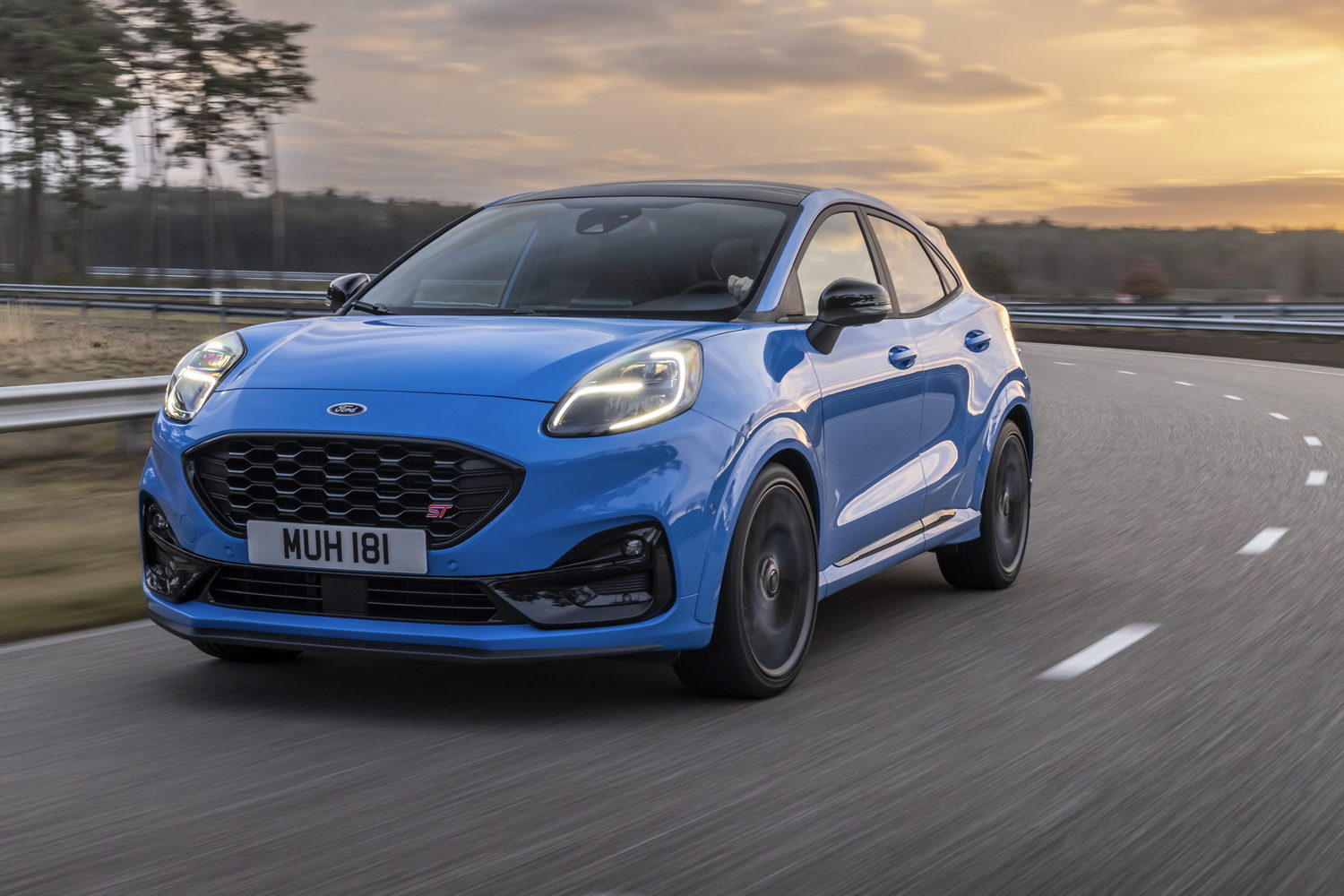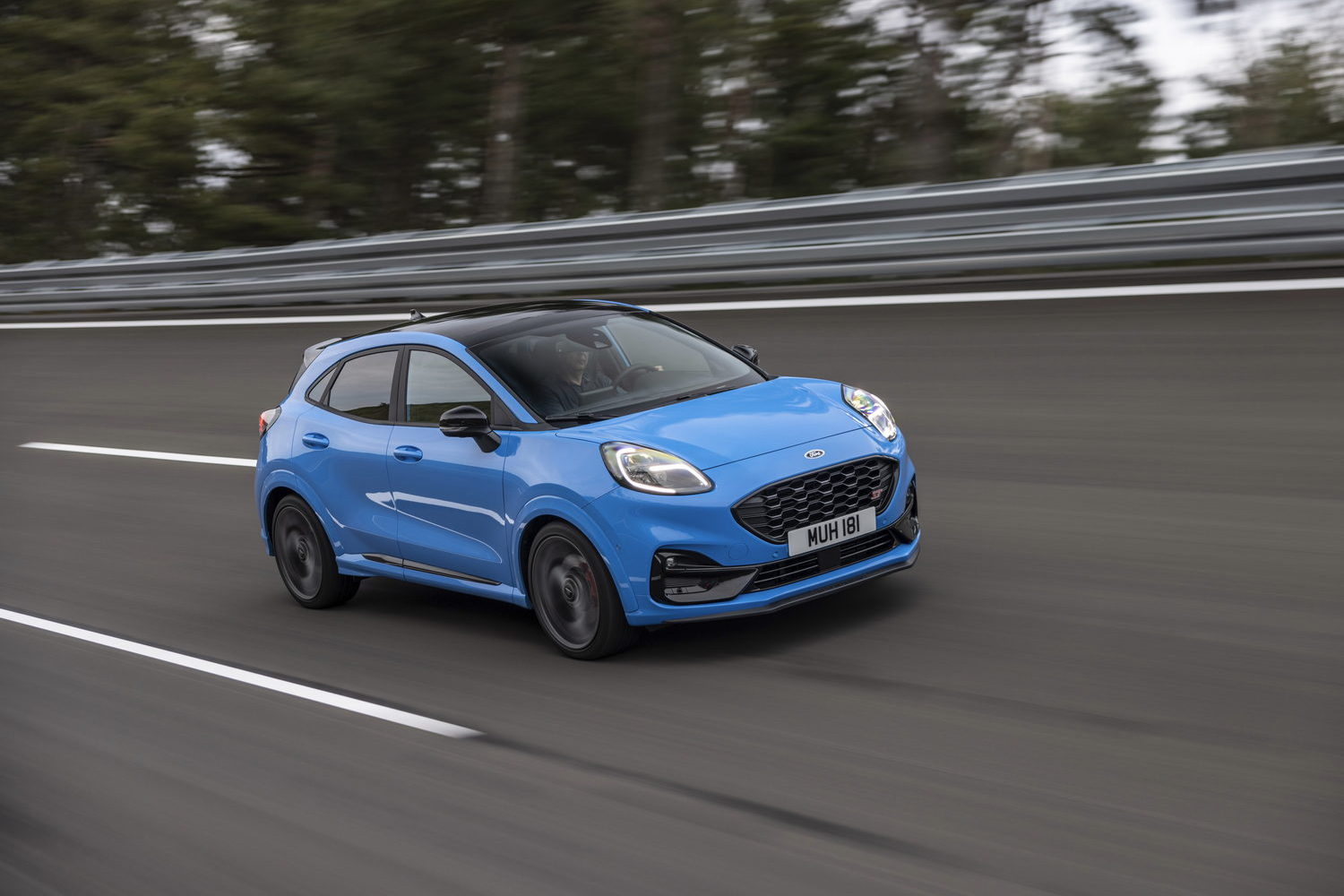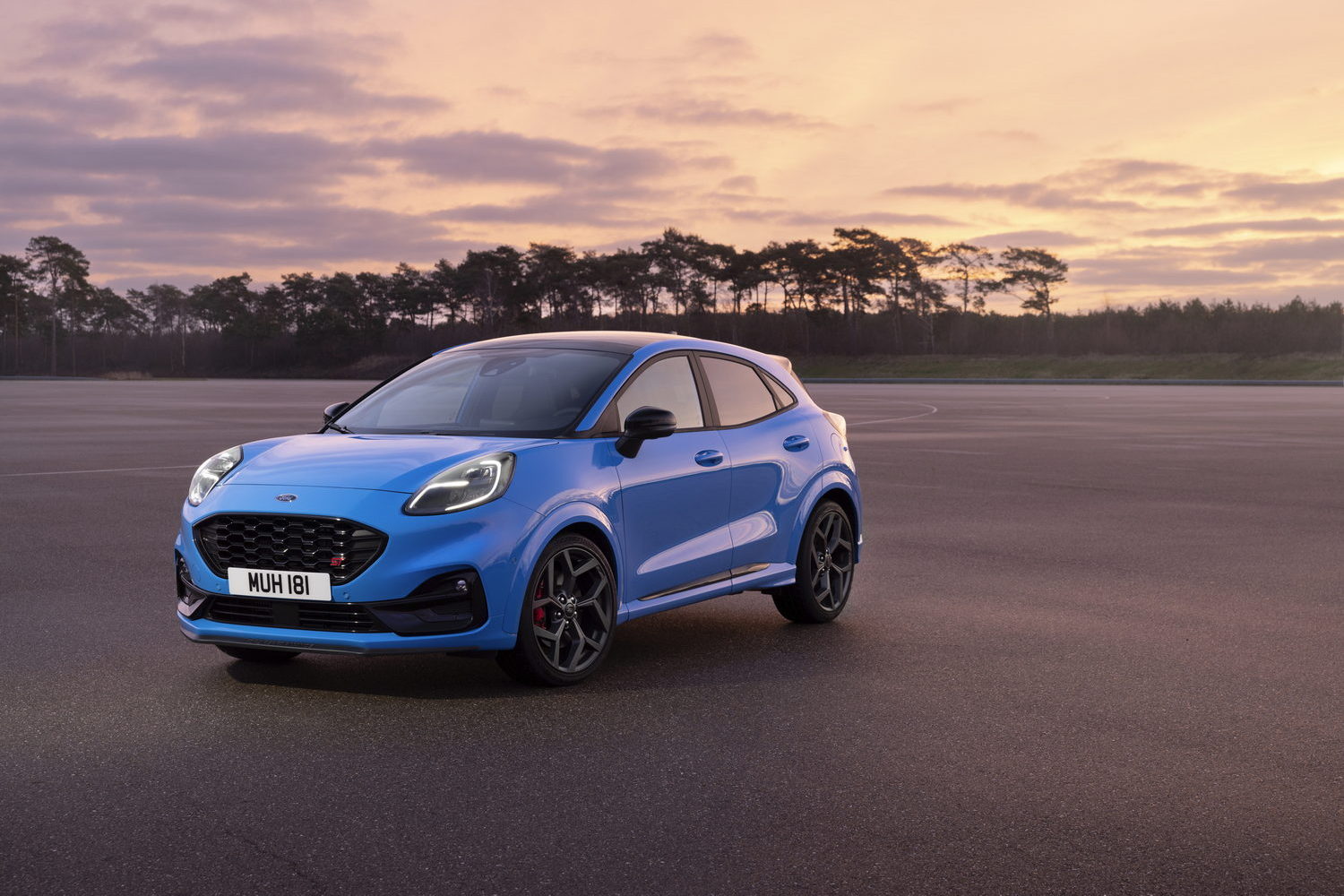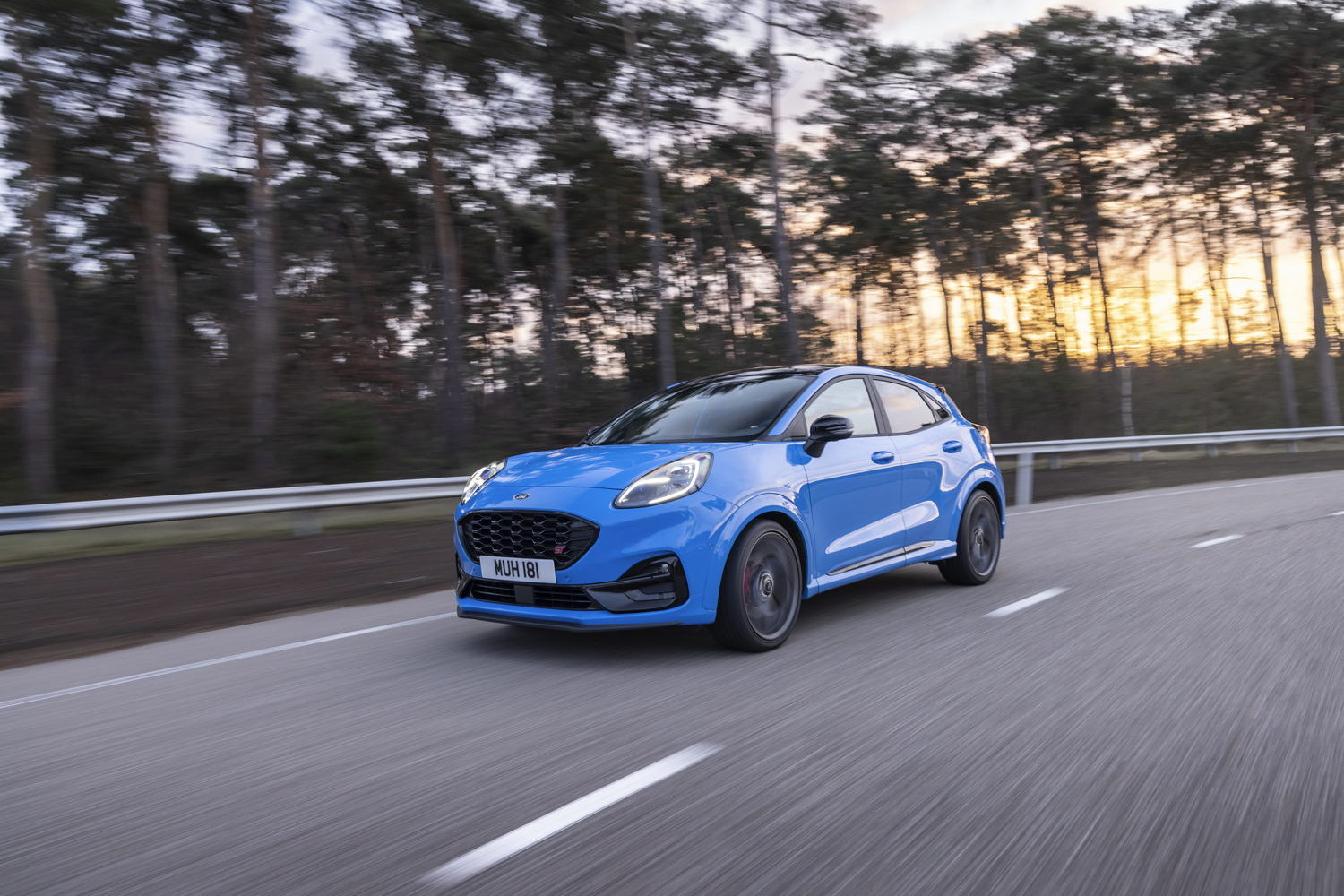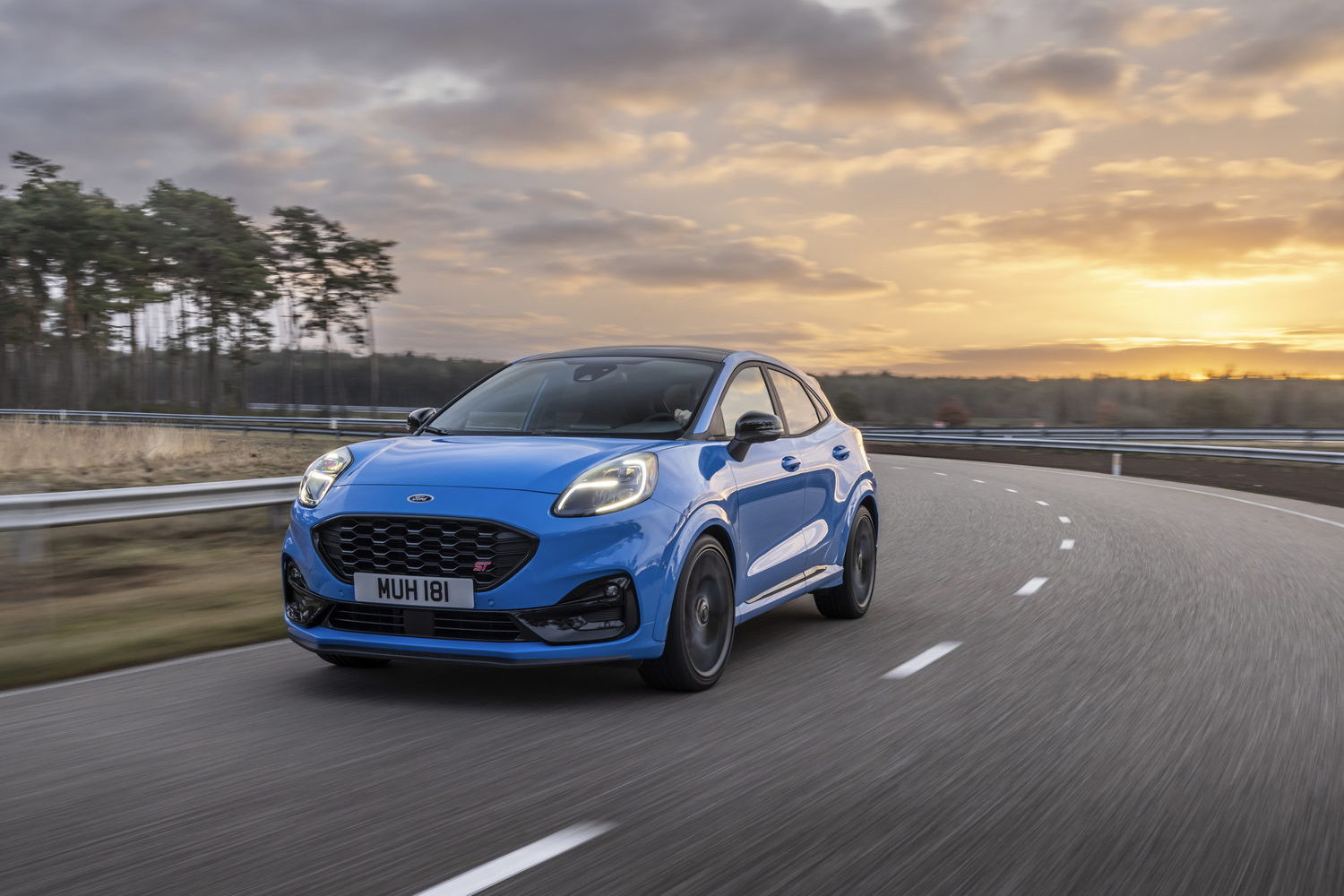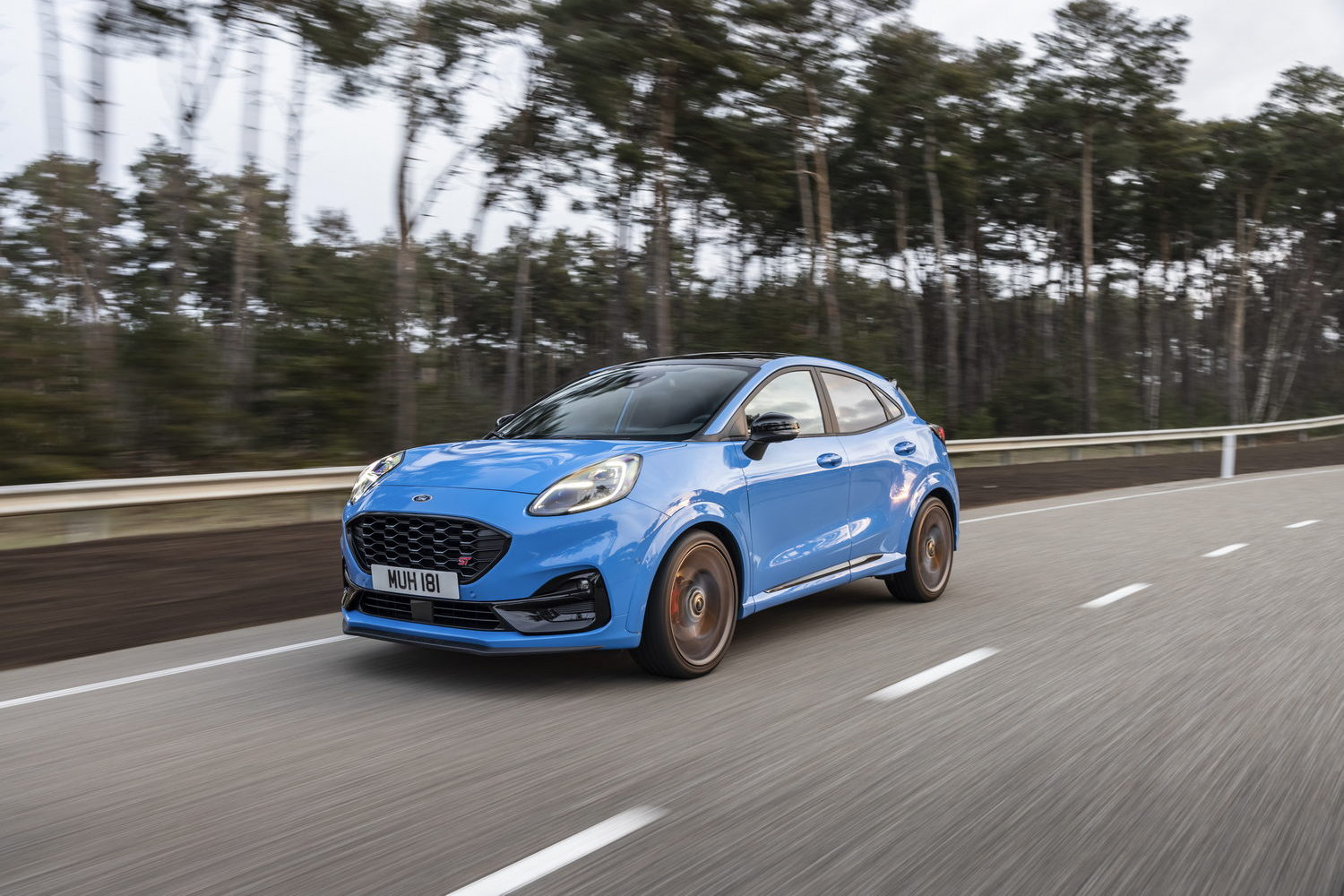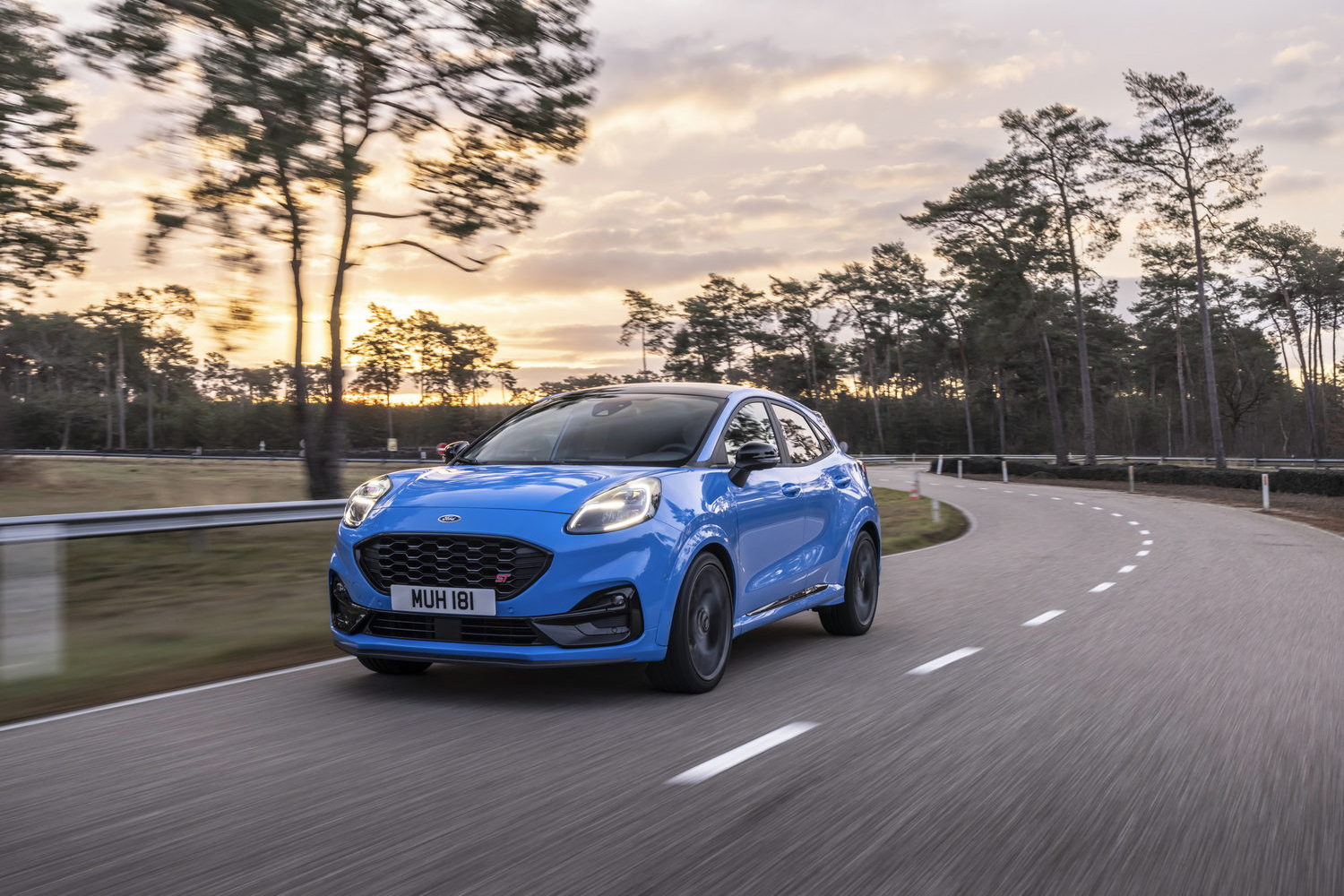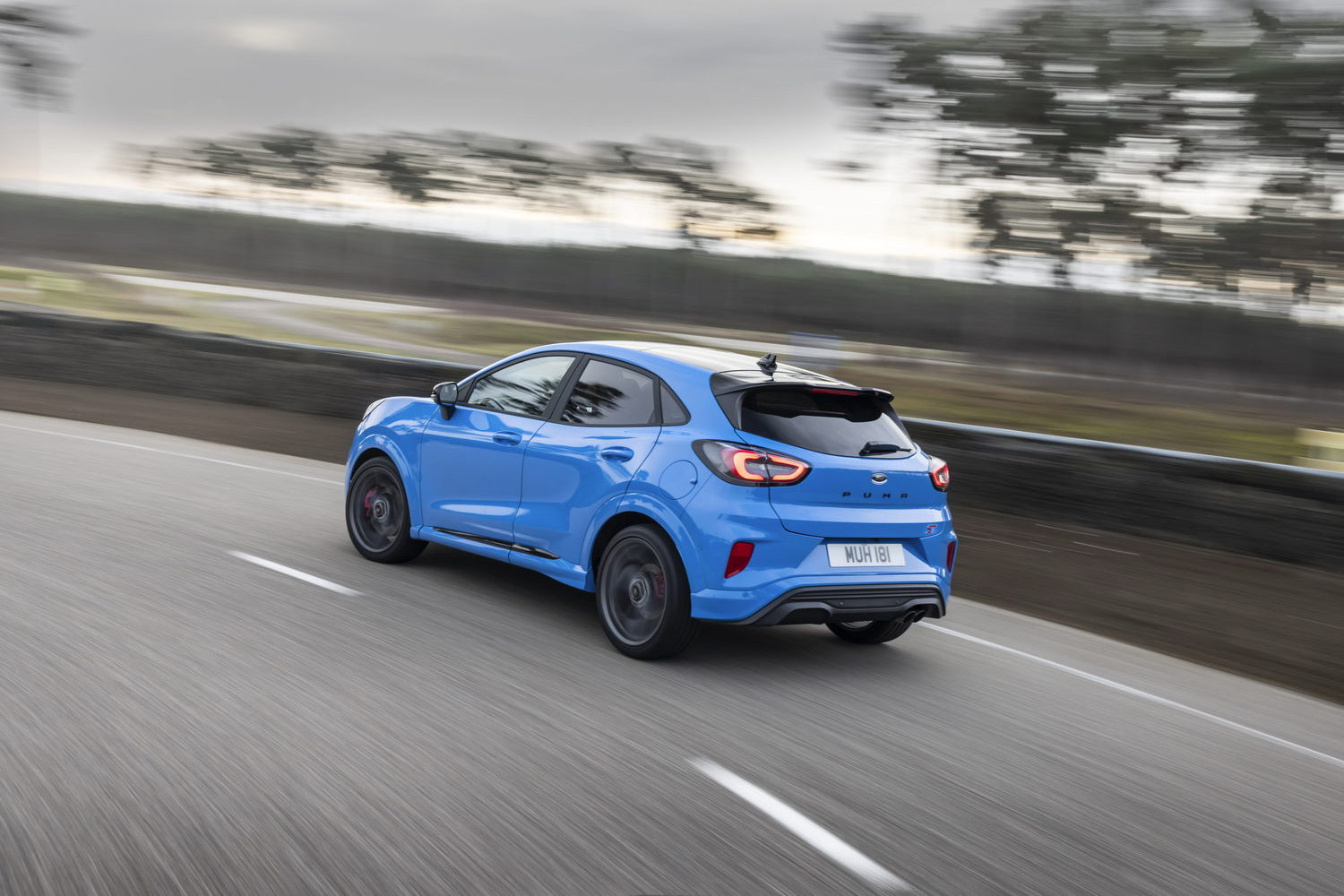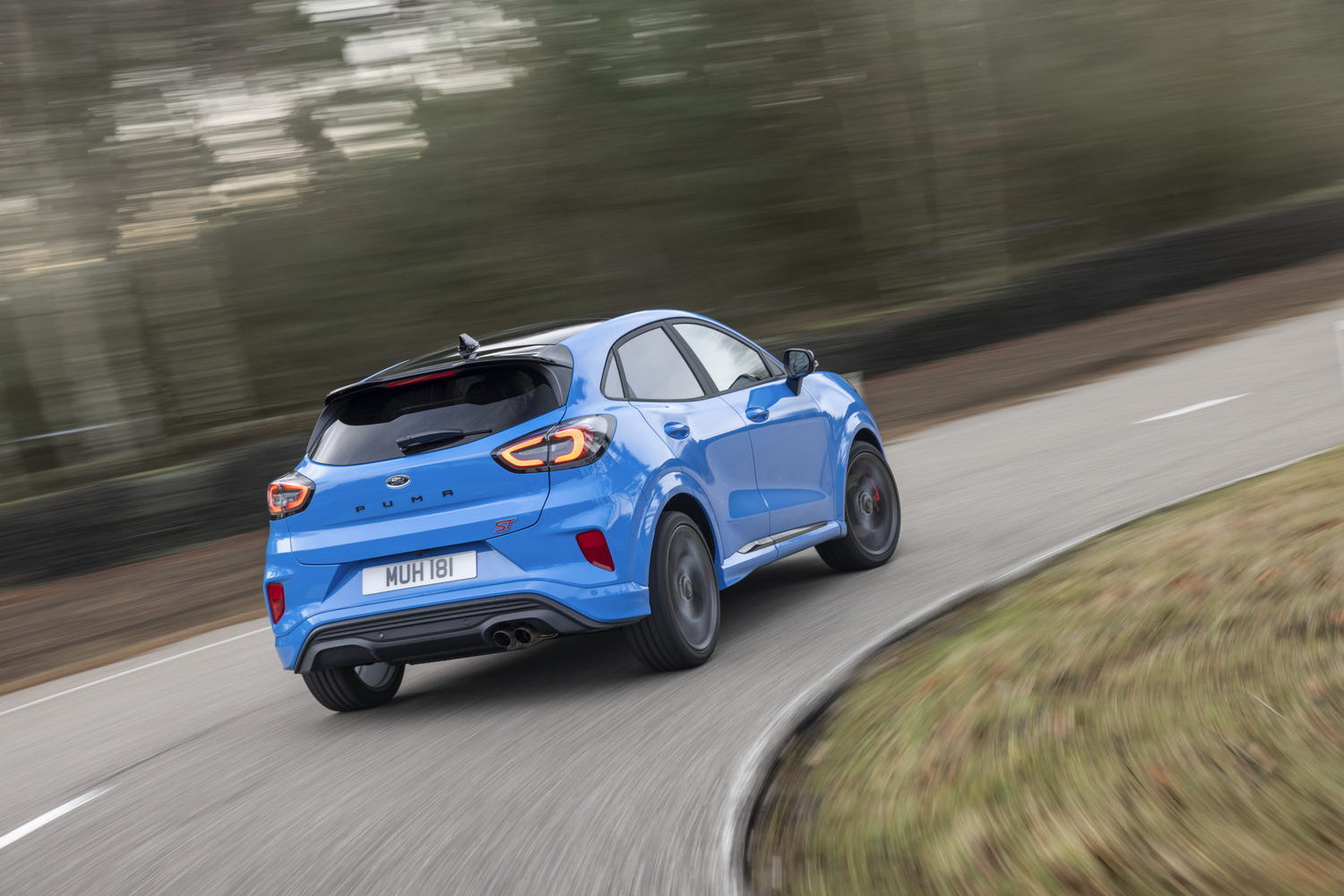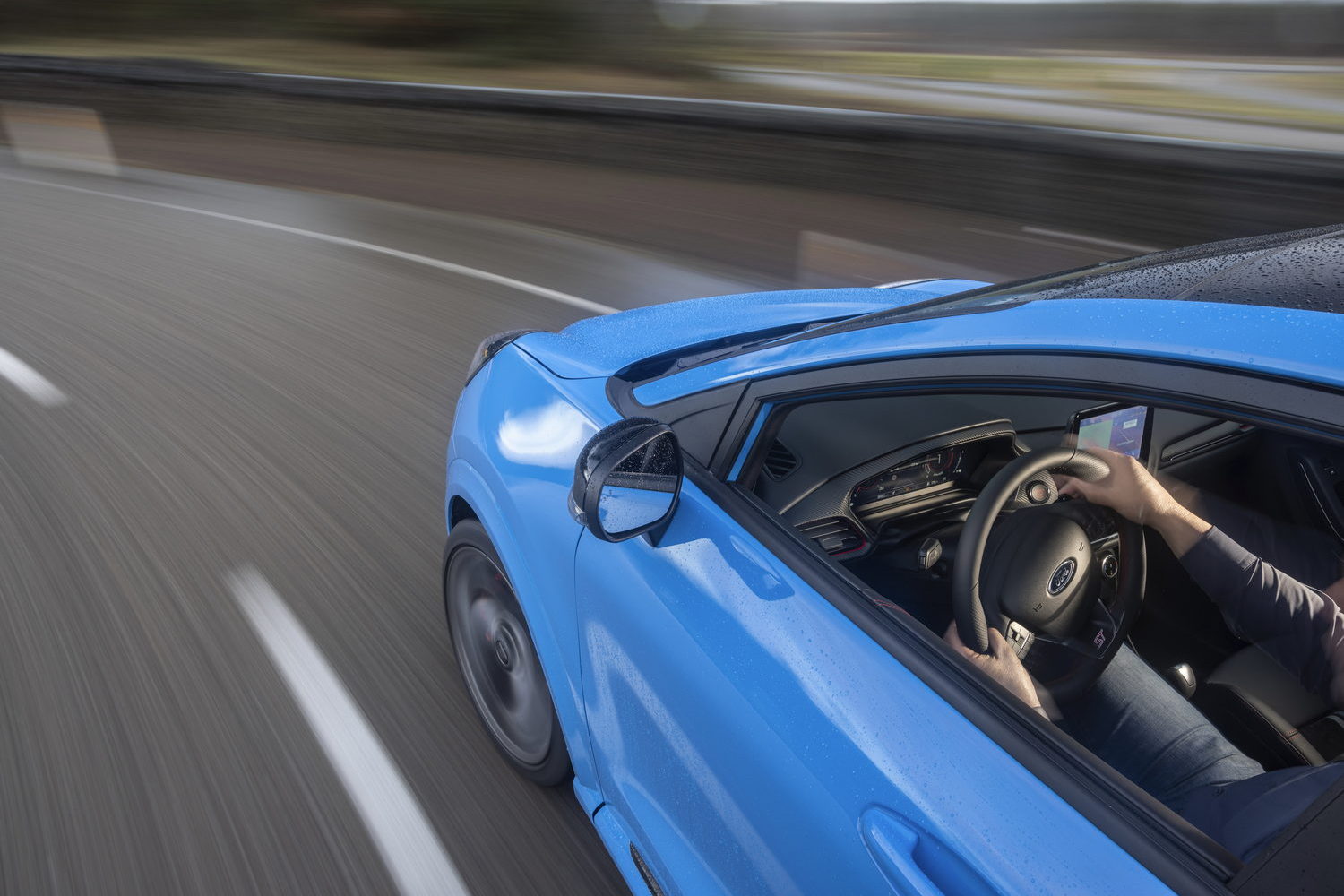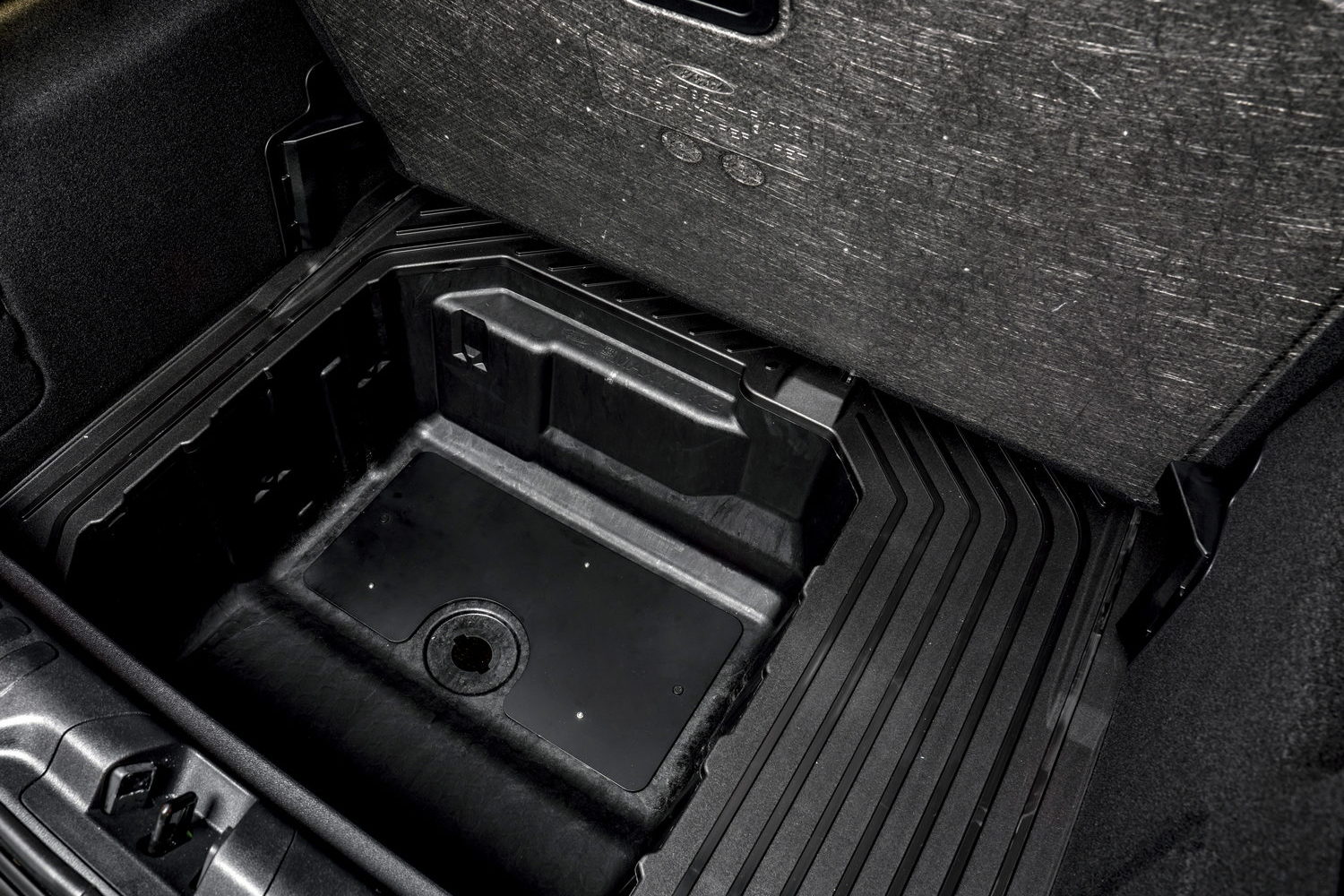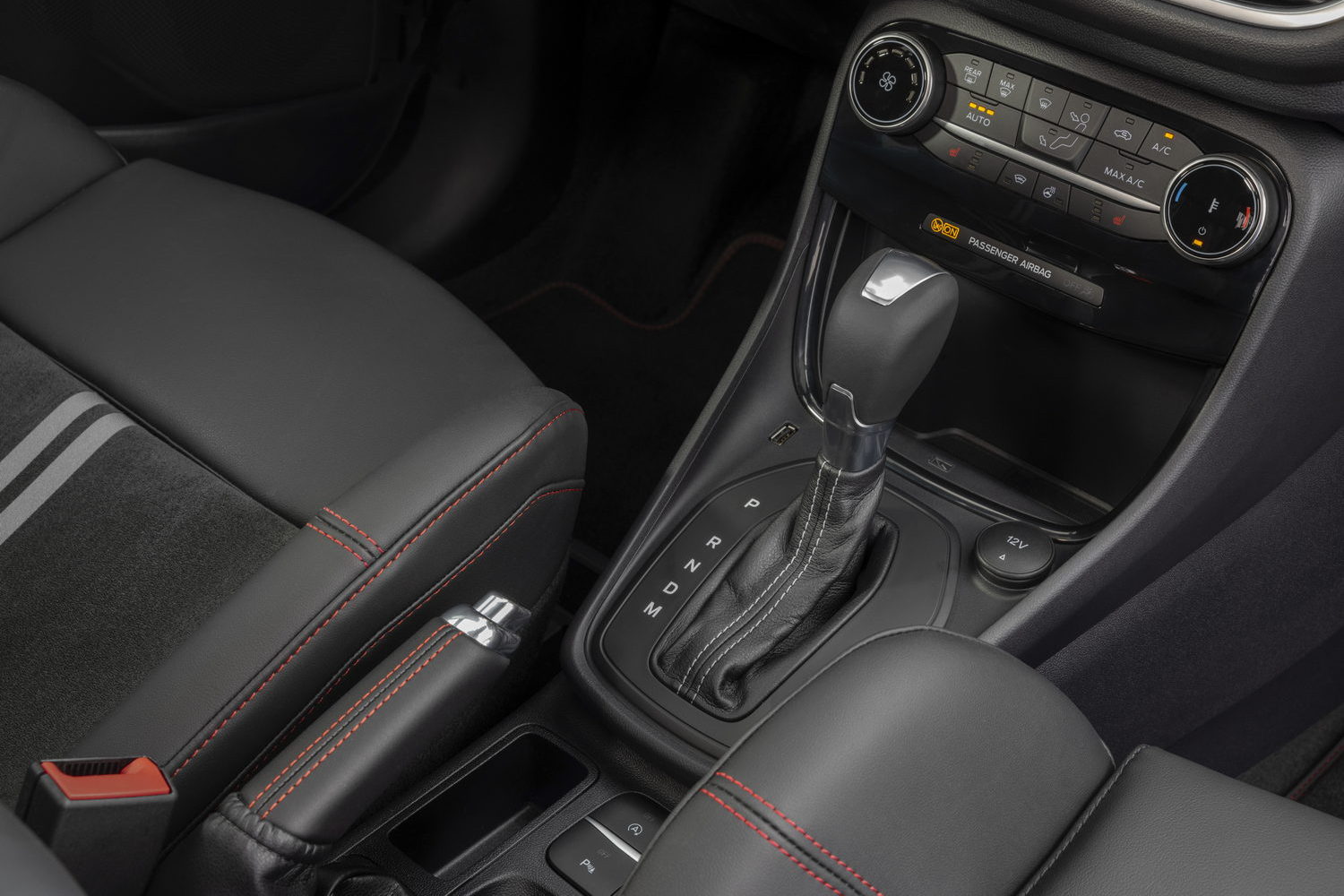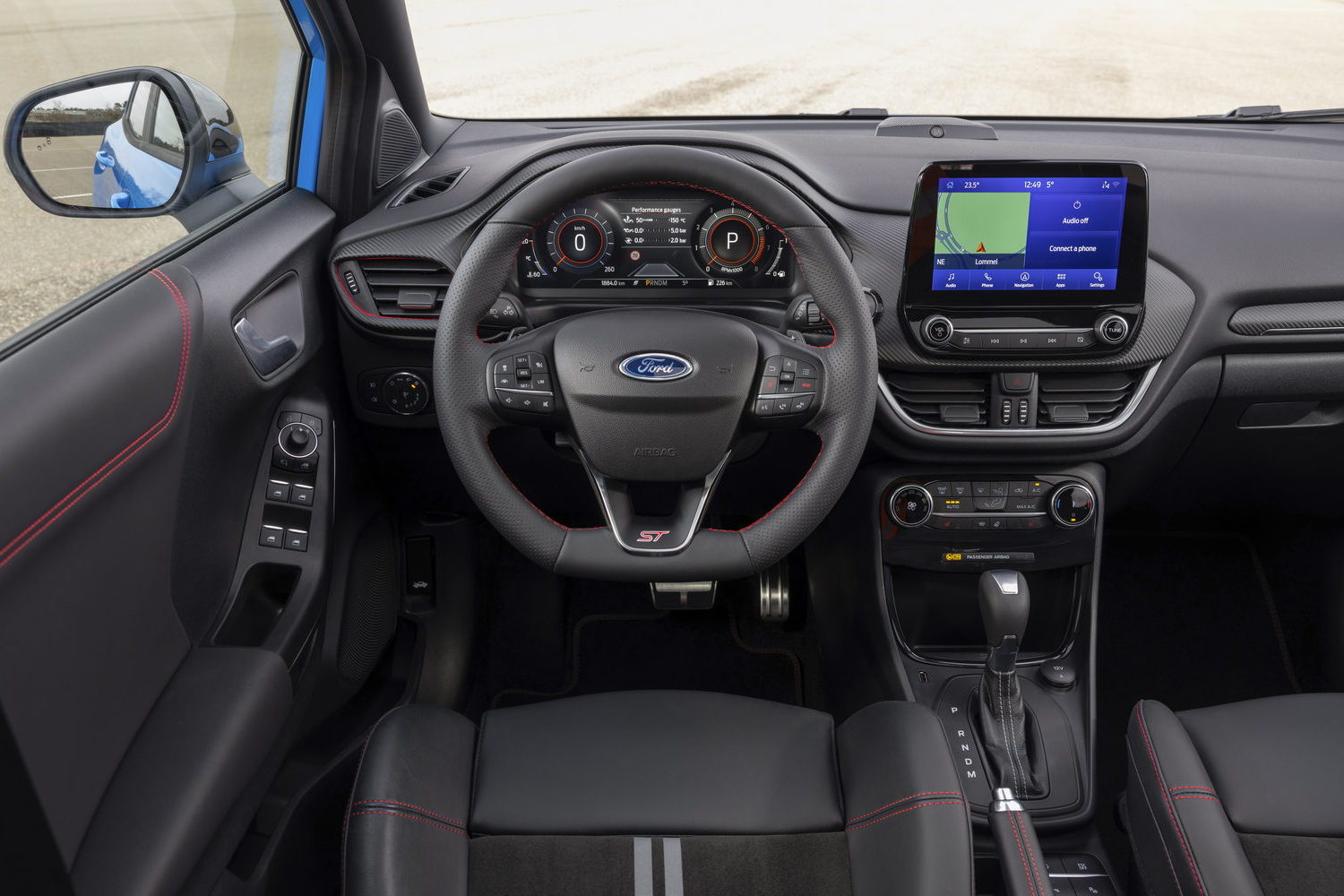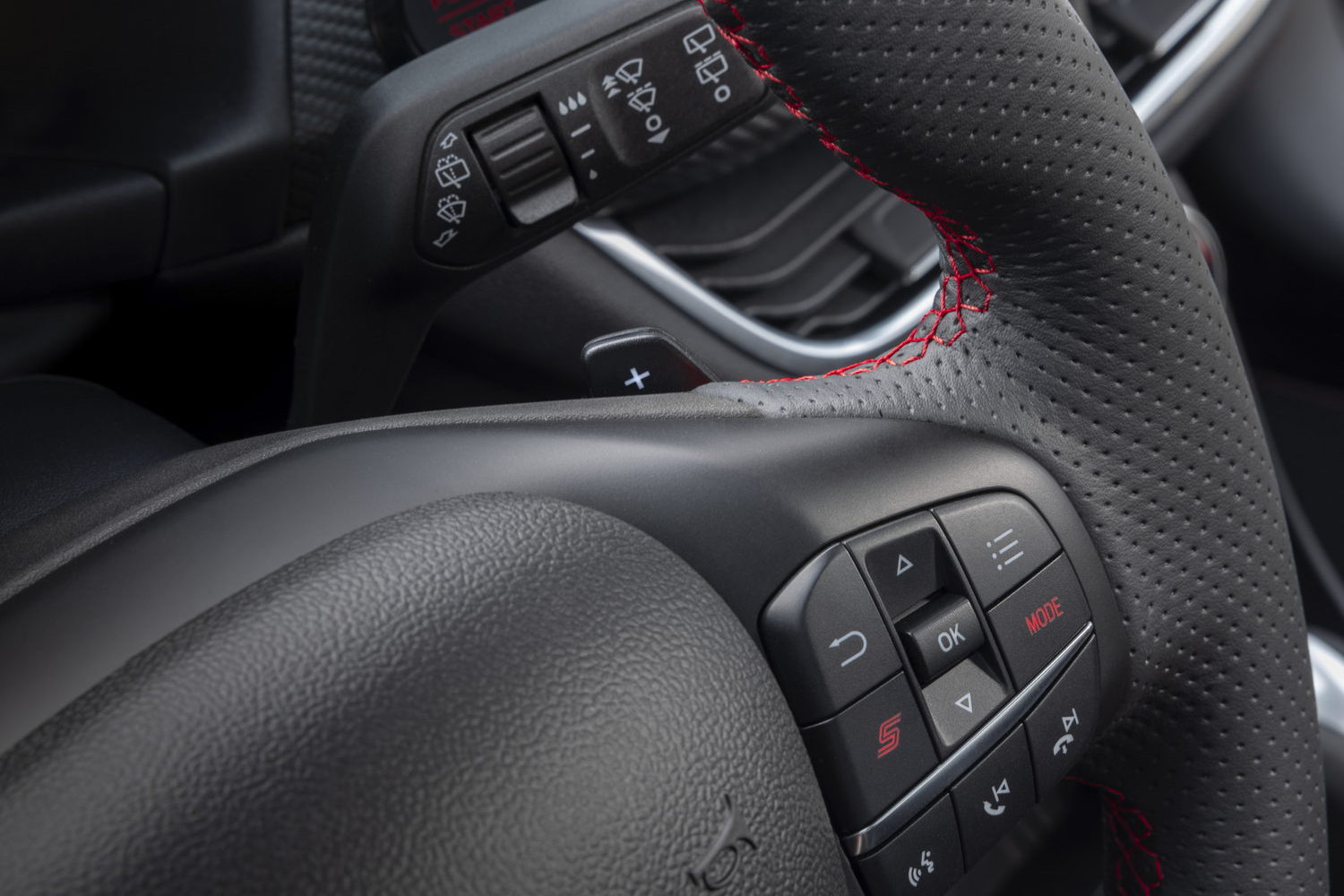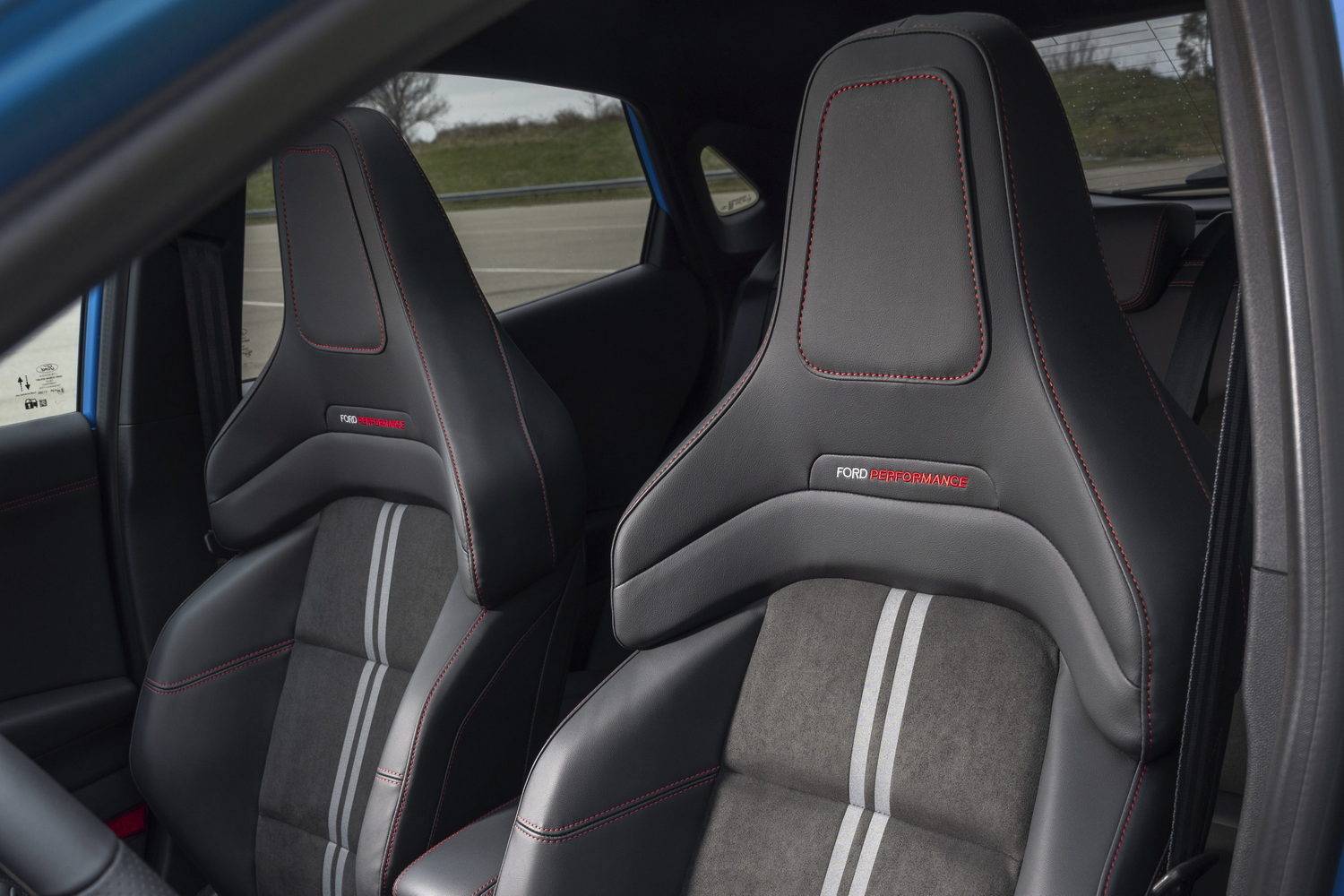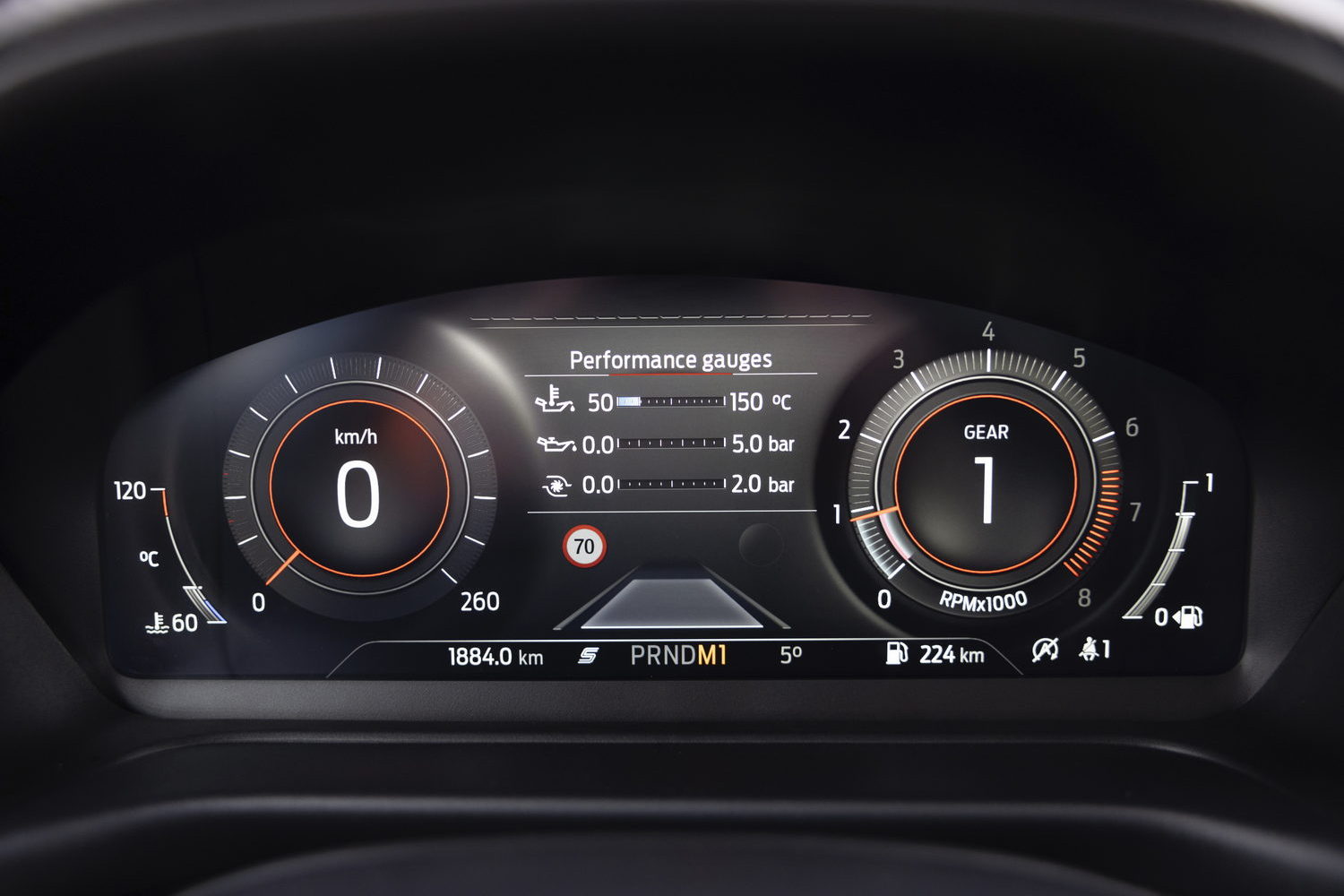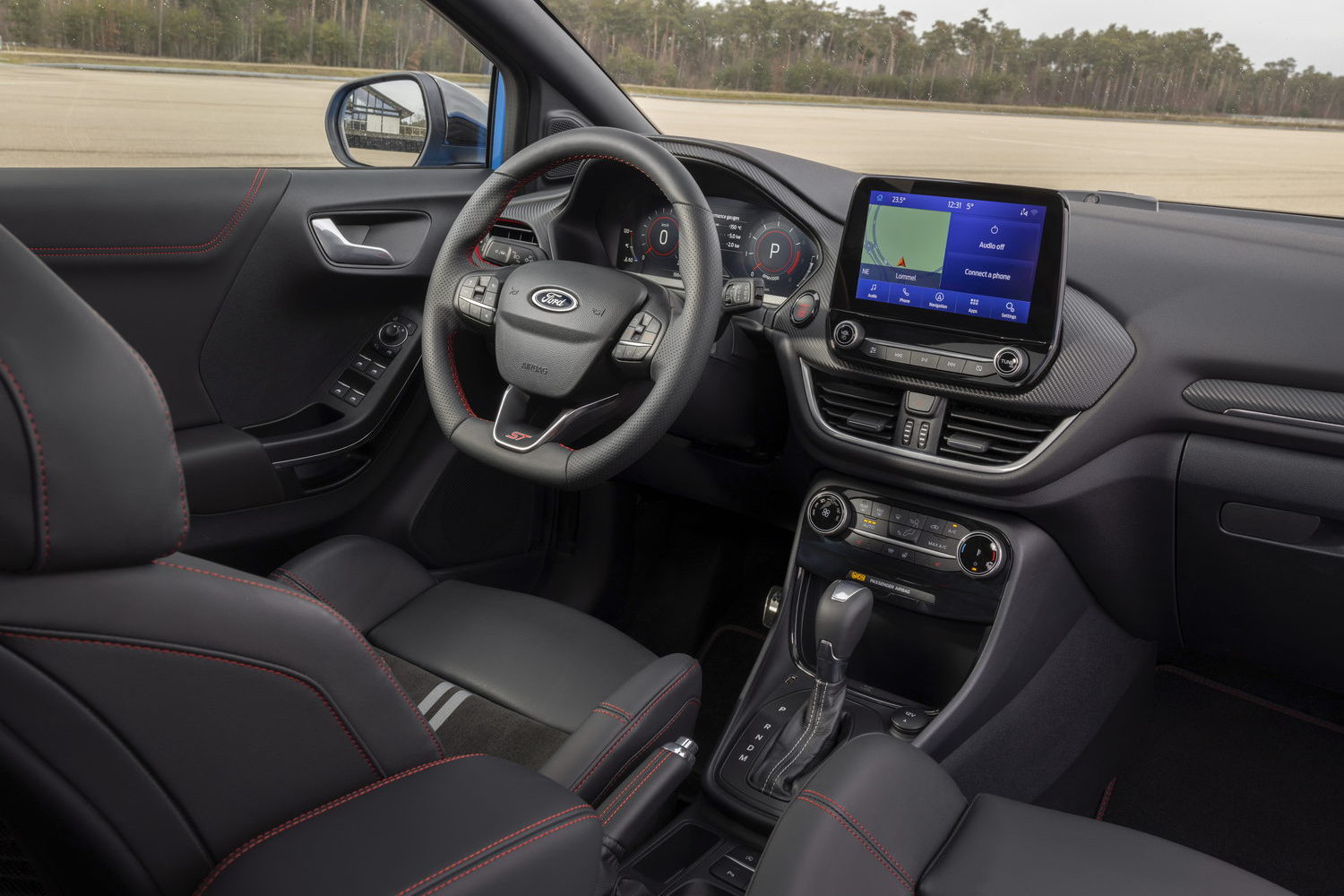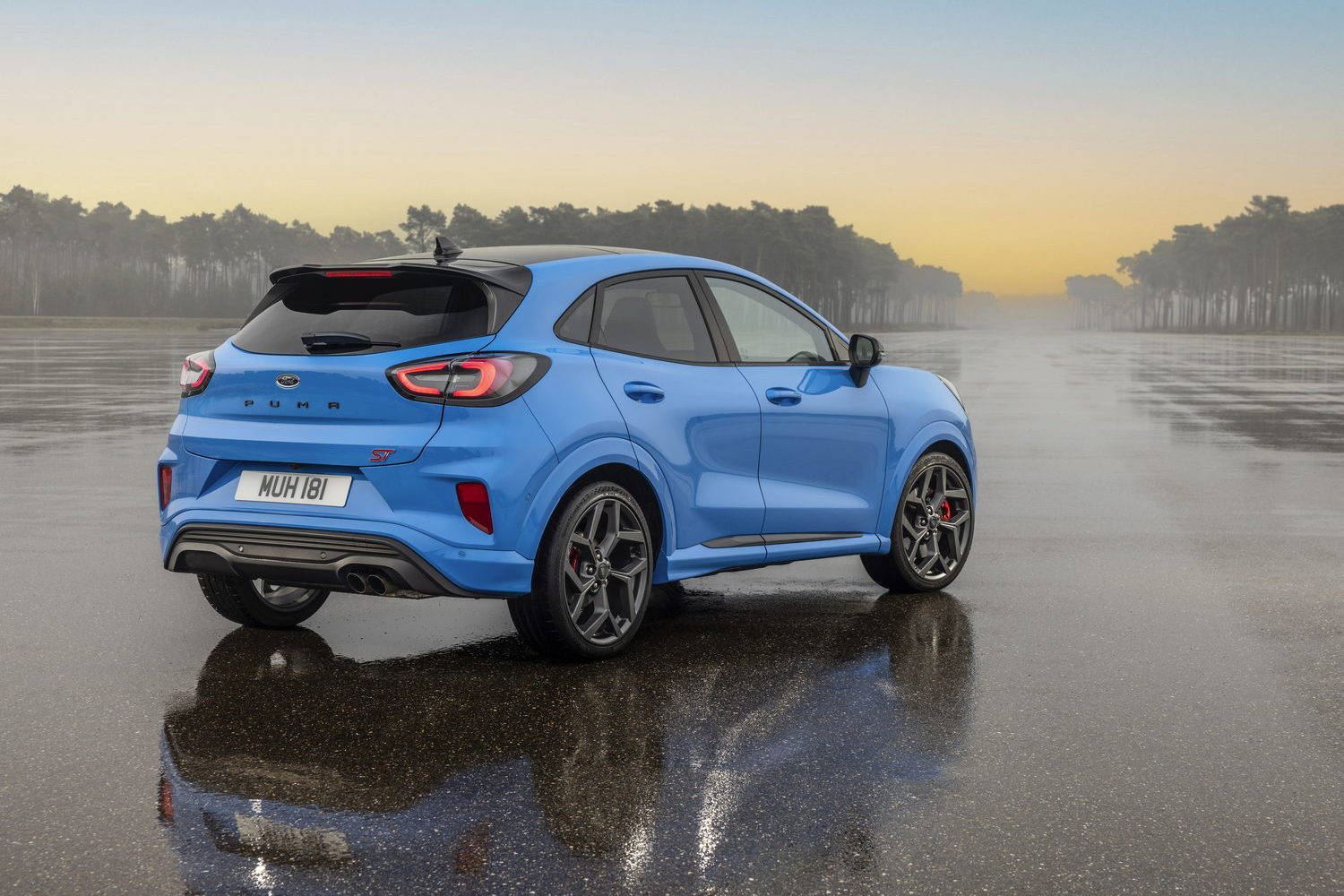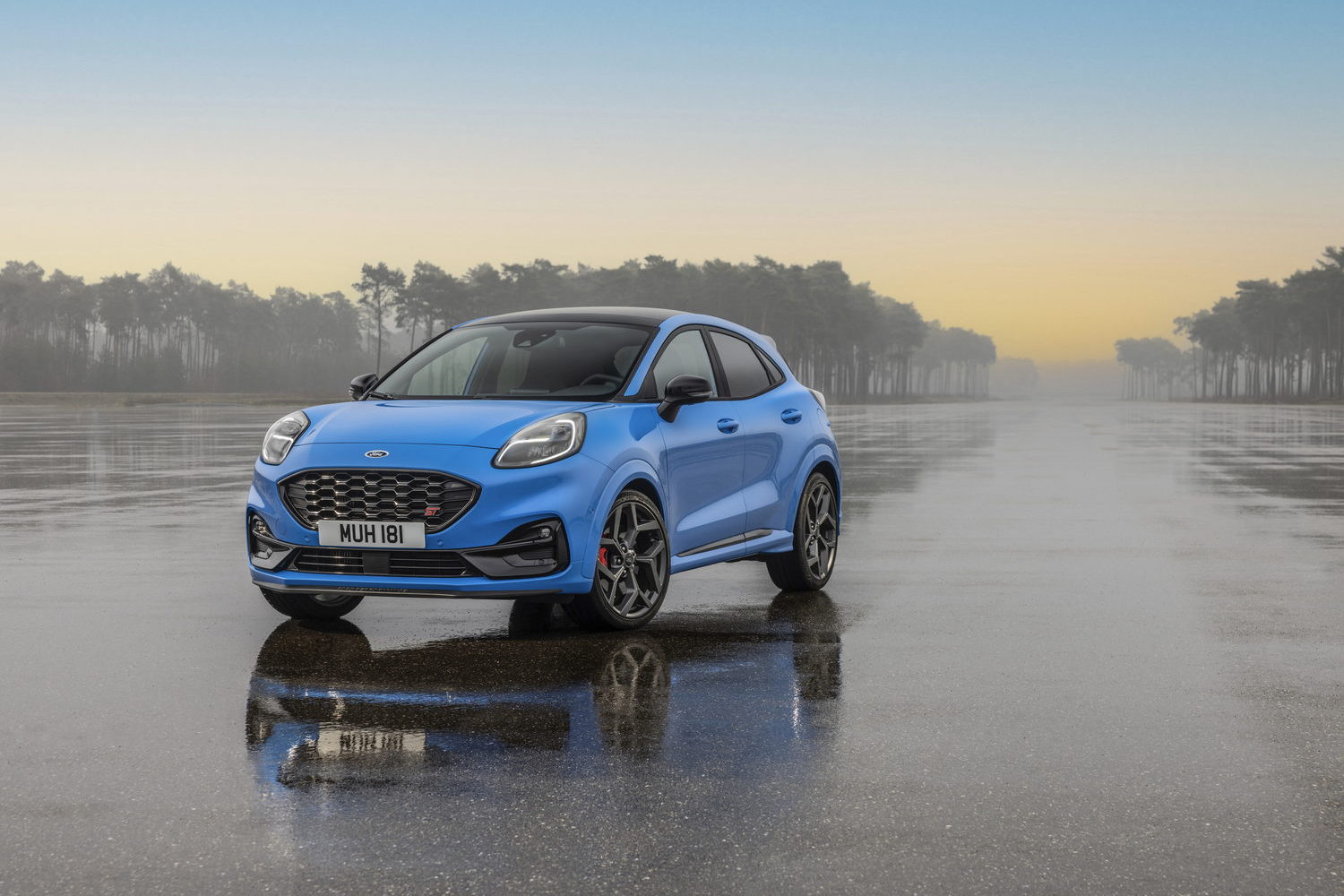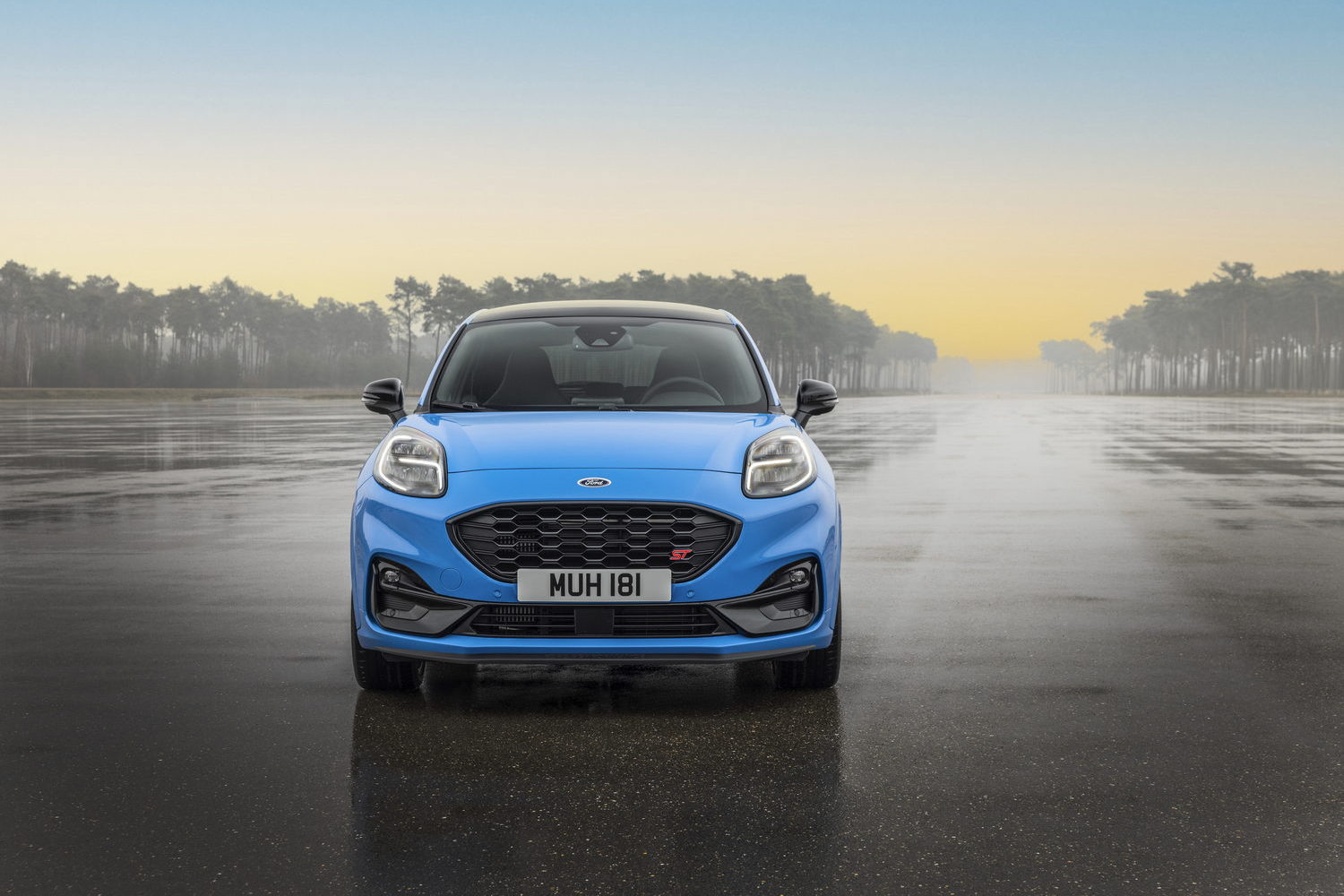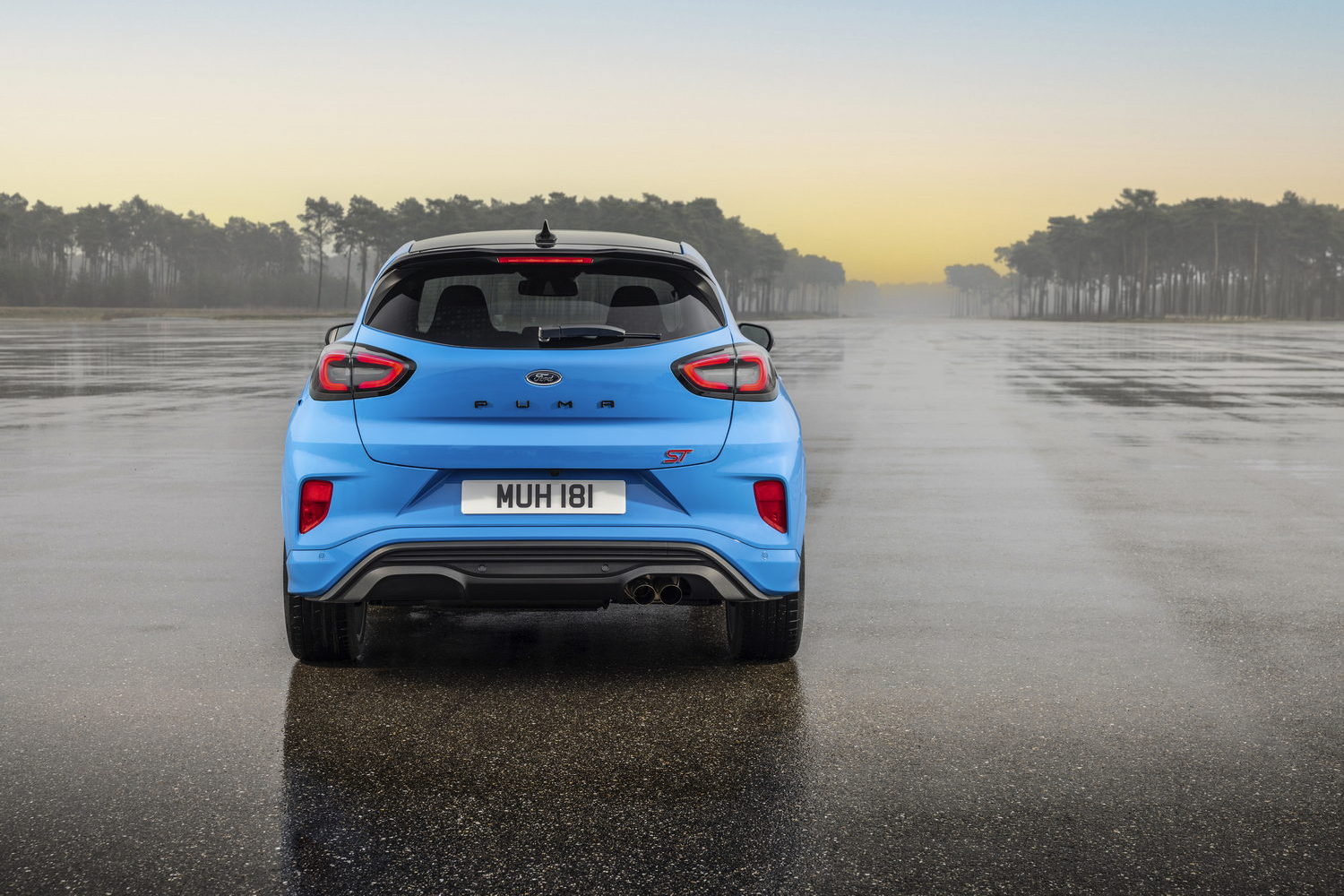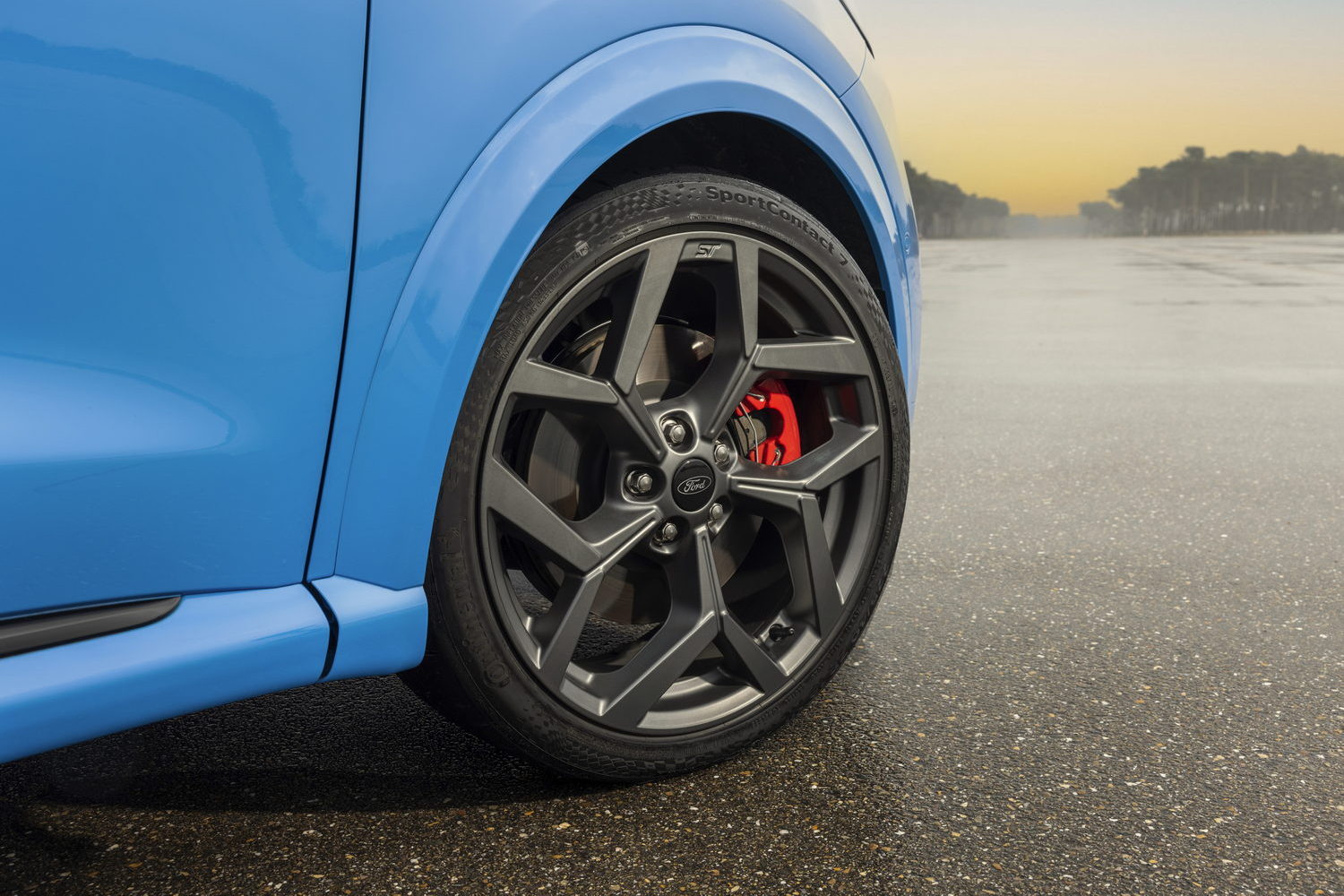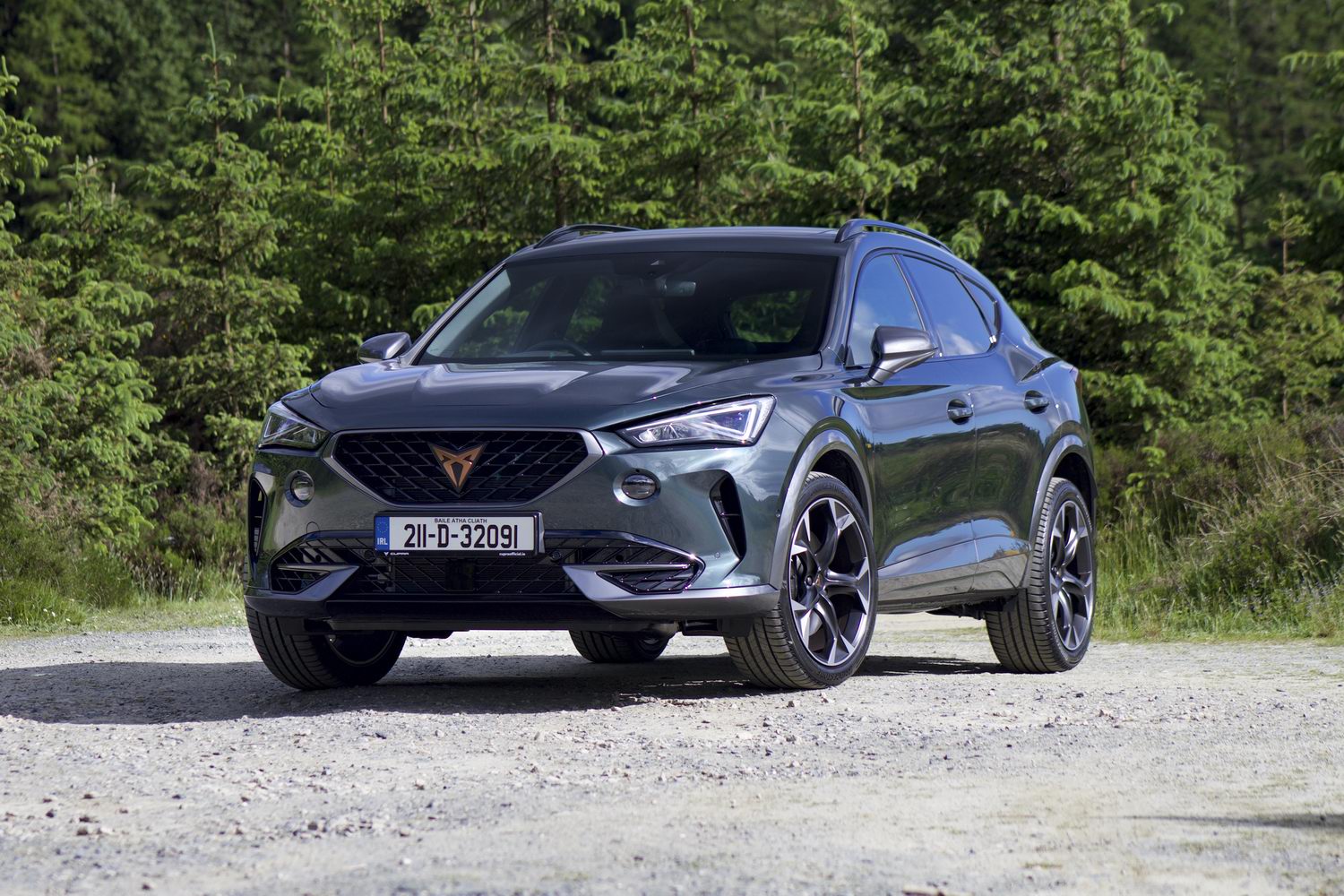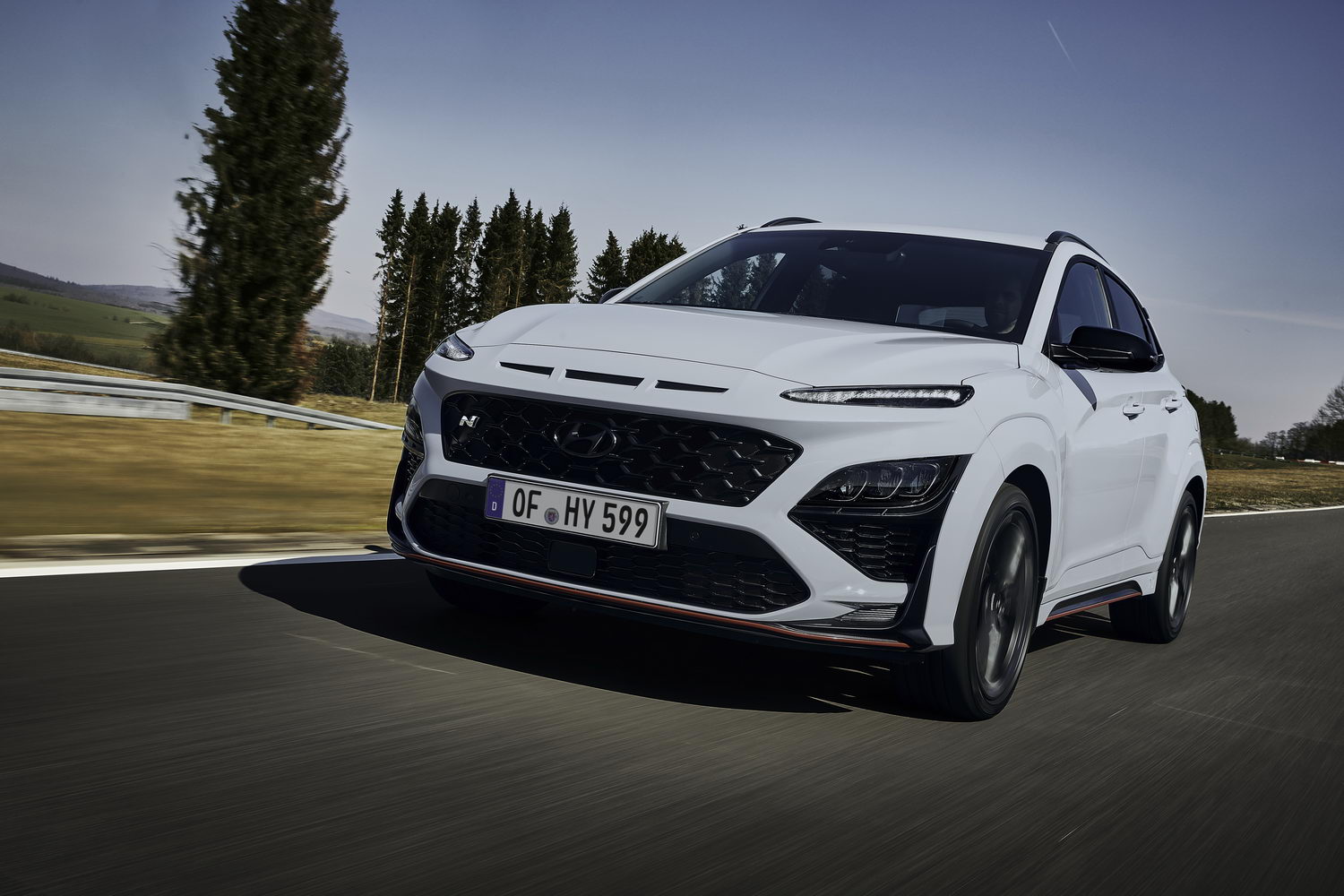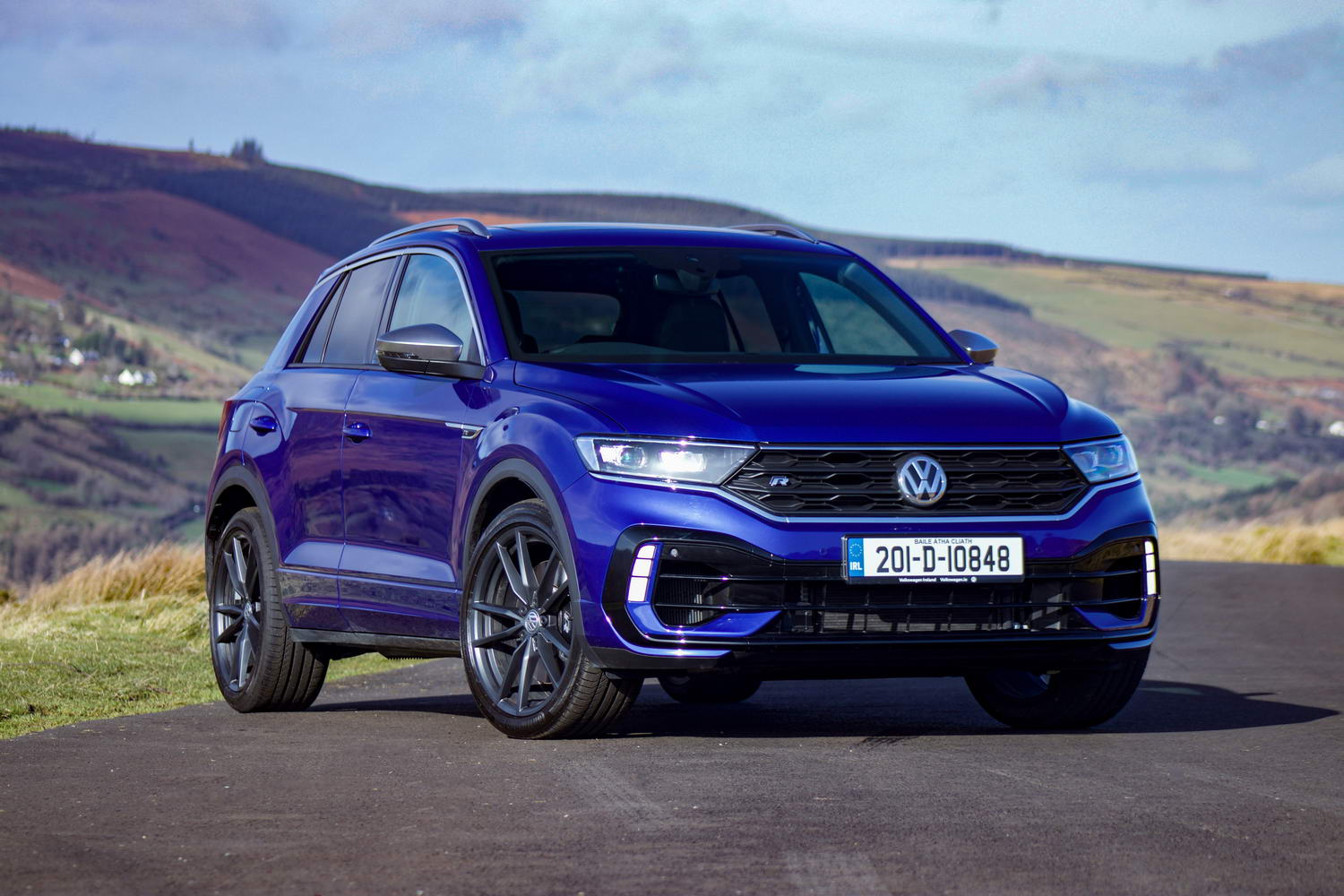Following the demise of the Fiesta, the Ford Puma has new responsibilities, and those extend to the high-performance ST model. All those customers who would have bought the Fiesta ST - and indeed did, in their droves, right up until it went out of production earlier this year - need to be catered for. To help the Puma ST's cause, Ford has introduced a new version that features a smaller engine, mild-hybrid technology and an automatic gearbox, but will the marginally less powerful model deliver on its promises of efficiency and user-friendliness? And will it prove more compelling than the standard ST?
In the metal
Telling the difference between the conventional 200hp Puma ST and the newer Powershift version takes some doing, because visual cues are basically non-existent. You get the same cool body kit, the same low ride height and the same dual exhaust outlets at the back. With the same choice of colours, too, the cars look like peas in a pod.
Of course, the easy shortcut is to look through the window, where you'll find a cabin that's almost unchanged, save for one or two small differences. Chief among these is the gear lever, which is a fairly conventional automatic shifter that's pretty much the same as the lever found on other automatic Ford models. And there's a set of slightly cheap-feeling shift paddles on the back of the steering wheel for those who'd like to take charge of gear changes themselves.
Otherwise, it's just like the standard Puma ST, with the same dashboard layout and the same Recaro bucket seats that add a bit of sporting style. Both versions of the Puma ST also get their own digital instrument display system, which adds a few more screens to the standard system to fit in with the newfound range of driving modes. Although the S mode doesn't do an awful lot except make the gearbox hold on to ratios for longer, it comes with a black instrument display that replaces the traditional blue.
But no matter what mode it's in, the Puma's digital instruments are a solid addition to a car that's starting to age a bit. They're clear and easy to use, but they sit in a cabin that's beginning to feel a little bit long in the tooth. Some of the plastics feel a tad low-rent compared with competitors' and while there's nothing wrong with the styling, there's nothing especially right about it either.
On the plus side, those bucket seats are more comfortable than you might expect, and the build quality is largely reasonable, with nothing that feels as though it's about to drop off any time soon. Ford's touchscreen technology isn't too shabby, either, although the Puma only gets the old Sync3 system, as opposed to the more advanced Sync4 offered in the latest Focus. Nevertheless, the Sync3 tech is still quite user-friendly, with big icons and clear displays, although it doesn't look especially pretty. But it does everything you need it to, and though the screen is a bit small by today's standards, it's good enough.
The same goes for the Puma's cabin space, which isn't exactly palatial - and the dark trim of the ST model doesn't help in this regard - but there's more room than you might think. You can, if you really want to, fit four relatively tall adults into the Puma, and though those in the back won't be living the life of Riley, they won't be too cramped either. If you only carry adults in the back occasionally, the Puma will do the job.
Boot space is also a mixed bag, with a space that looks pretty large on paper but looks somewhat less capacious when you open the tailgate. That's because the quoted boot space includes an 80-litre tub under the floor, which is waterproof and comes with a drain plug so you can let any water out. The idea is you can store muddy wellies or sports kit in there without messing up the lovely carpet, then mop the space out when you're done. But Ford, being American, advertised it as an ice bucket for drinks. Because America.
However you choose to use the tub, it's a useful addition to the Puma's boot, but that boot feels a tad small compared with other compact SUVs. There's more conventional luggage space in the back of a Skoda Kamiq or a Volkswagen T-Roc, for example. Still, the Puma's boot isn't that much smaller than that of a VW Golf, so it's still a useful luggage bay.
Driving it
While there are some similarities between the engines in the two versions of the Puma ST - namely that they're both three-cylinder turbocharged units wearing the EcoBoost name - they are significantly different. For starters, the Powershift model's is a 1.0-litre unit, whereas the manual gets a 1.5-litre engine, and there's a noticeable difference in power, too. While the manual ST gets a nice, round, 200hp, the Powershift makes do with 170hp.
That said, the Powershift gets a little assistance from a 48-volt mild-hybrid system, which effectively operates as a glorified stop/start feature. That means it burns less fuel, although it's difficult to make too many comparisons because of the difference in engine displacement, power output and gearbox.
For many, the Powershift automatic transmission will be a key reason for choosing this car over the conventional ST, because it goes without the standard car's rather impressive six-speed manual gearbox and replaces it with a seven-speed automatic. As well as cutting the number of pedals in the driver footwell by 33 per cent, that also gives the ST a bit more cruising economy, because of the higher extra gear ratio. Where the standard ST's engine is turning at around 3,500rpm at motorway speeds, even in sixth, the Powershift model is spinning more slowly, improving economy and refinement.
The catch, however, is that the Powershift's engine doesn't have the clout of the standard ST's, and performance takes a noticeable hit. Where the manual ST will do 0-100km/h in 6.7 seconds, the Powershift version extends that time by more than half a second, and that's a bit of a kick in the teeth for a supposedly performance-orientated car.
That said, the mild-hybrid Puma feels pretty perky, with the little three-cylinder engine producing quite an eager growl that belies its diminutive capacity. And if truth be told, a 0-100km/h time of 7.4 seconds is still every bit as fast as most people will need it to be. At that pace, nobody is going to struggle to keep up with traffic, even if the gearbox will occasionally need a moment to sort itself out before overtaking.
Again, though, the plus side is fuel efficiency. Where the standard ST will use 6.6 litres of unleaded every 100km on the official economy test, the Powershift cuts that to 6.3 litres. And if you're on a long drive, you'll probably end up approaching the 5.5-litre mark, whereas the ST will struggle to burn fewer than 7.0 litres/100km at motorway speeds.
Performance and economy aside, though, the manual and automatic versions of the ST drive with predictable similarity. Of course, the manual version is subjectively more engaging, making you feel like an organic part of the machine, but otherwise the automatic performs well.
Both cars sit surprisingly low to the ground for a car that's supposedly an SUV, and it's easier to scrape the nose on inclines and speed bumps than you might imagine, but the lowered and stiffened suspension means the body is quite well controlled, without too much lean in corners or dive under braking. Combine that with steering pinched from the Ford Fiesta ST and it feels really precise, which makes it good fun on a twisty mountain road. It isn't quite as brilliant as the now-defunct Fiesta ST, of course, but with that car out of the picture it's hardly a fair comparison.
Obviously, the trade-off for that handling is a slightly firm ride, but the Puma ST is far from intolerable. The suspension is just about supple enough to prevent long drives from feeling like too much of a chore, but you still can feel potholes and cats' eyes through your backside. If we were feeling generous, we might call it "communicative," but most would simply deem it a little stiff.
Refinement isn't brilliant either, and there's a fair bit of noise in the Puma ST's cabin, although it's better in the Powershift than in the standard car, if only by dint of the extra gear ratio keeping the engine more hushed at speed. Even so, road noise is noticeable, and you get thumps as the tyres pass over the country's more prominent potholes.
What you get for your money
The Puma Powershift is classed as a special order in Ireland, but we did manage to get a confirmed price from Ford - €45,091. That means it's about €2,500 cheaper than the 1.5-litre manual model.
It gets all the same equipment as the original Puma ST, with the same Recaro bucket-style seats and carbon-effect trim on the dash, as well as the touchscreen and digital instrument cluster. Heated seats and a heated steering wheel come as standard, too, as well as a reversing camera.
Summary
Although it has long been one of the best cars in its class, simply being based on a crossover made the Ford Puma ST a difficult sell in the eyes of some. And swapping the brilliant manual gearbox with an automatic and shrinking the engine won't increase its already limited appeal in those circles. But for everyone else, the ST Powershift has a lot going for it. More refined and economical than the manual version, it's an easier car to live with and it's almost as good to drive. To top it all off, it's usefully cheaper to buy.

